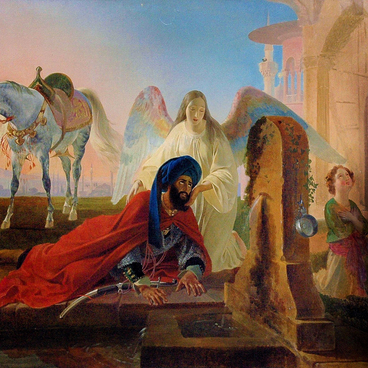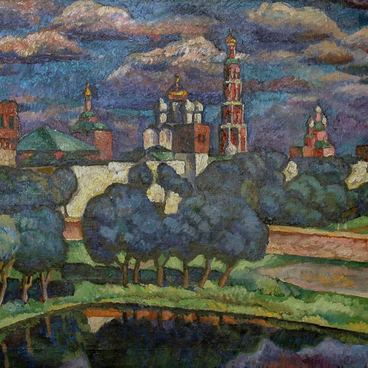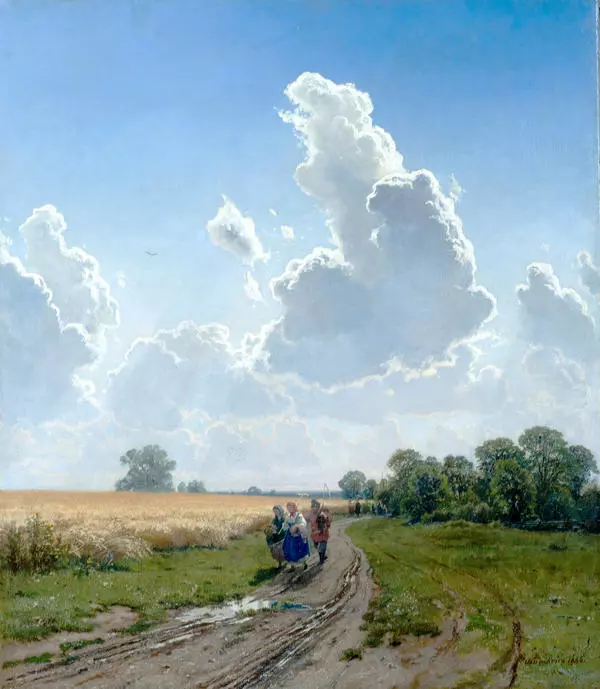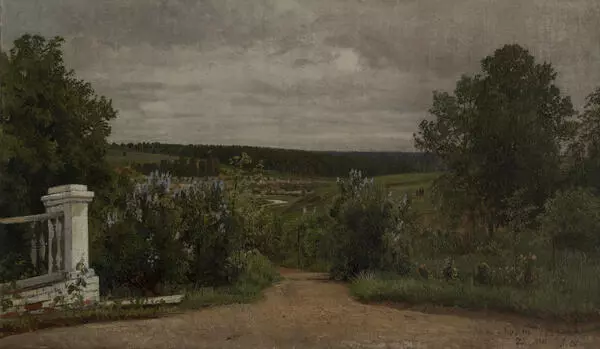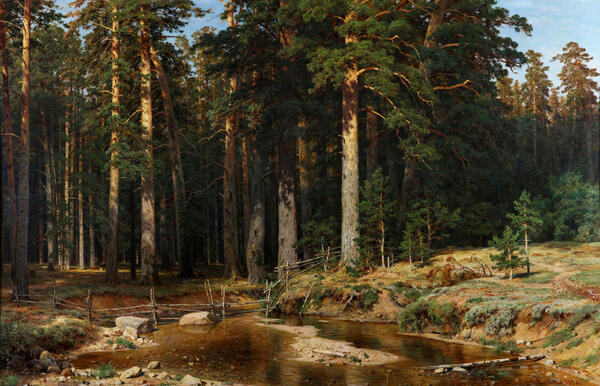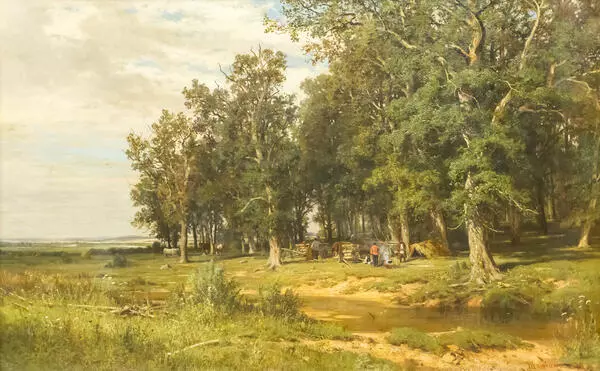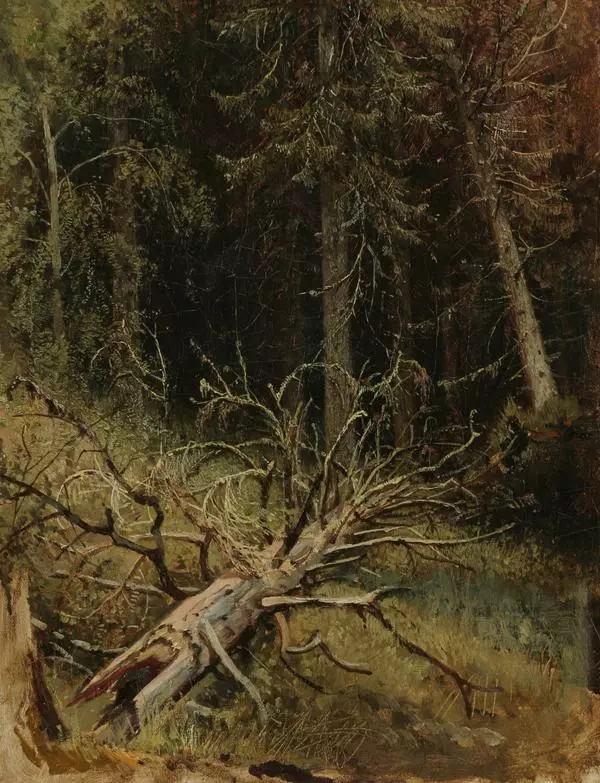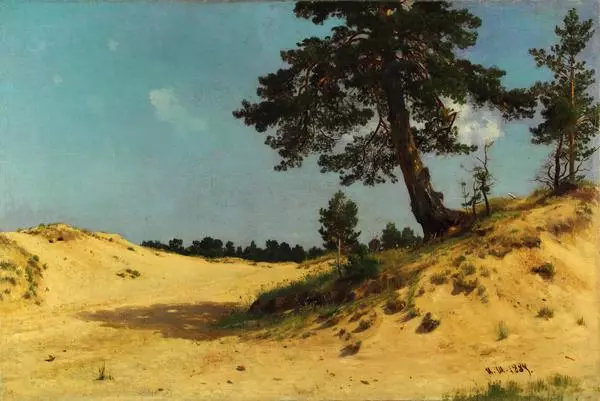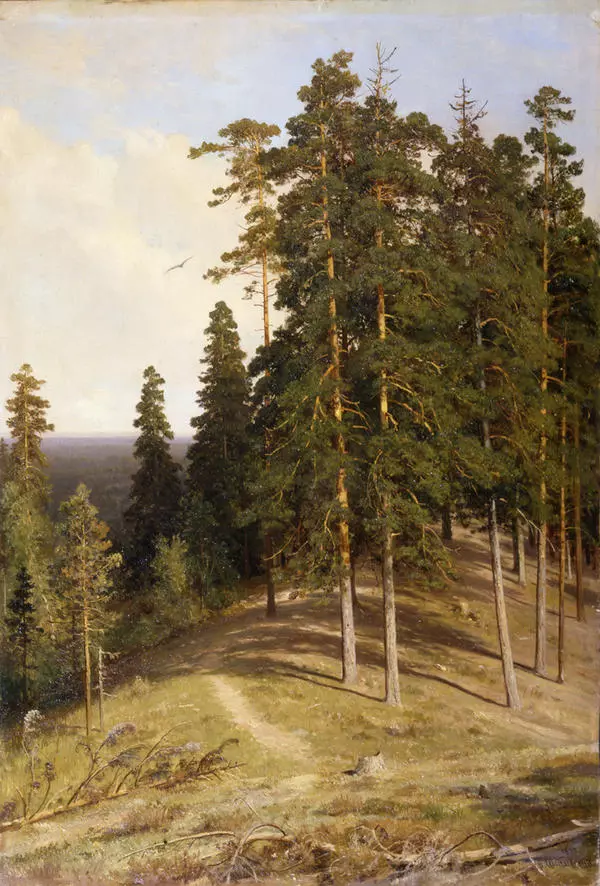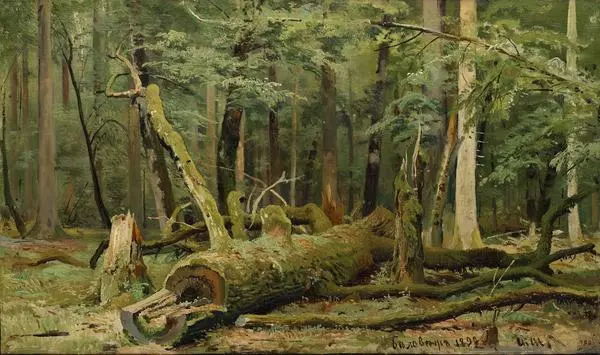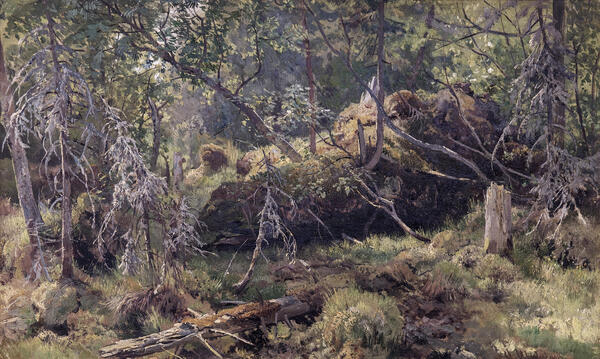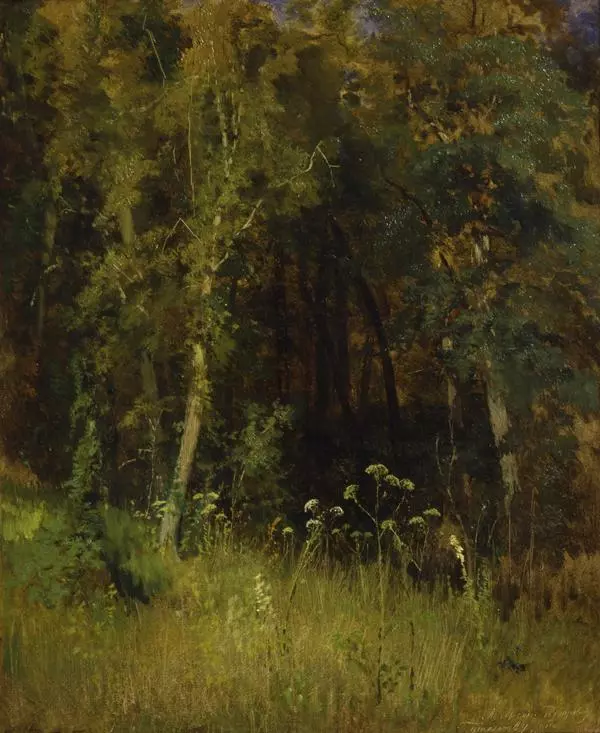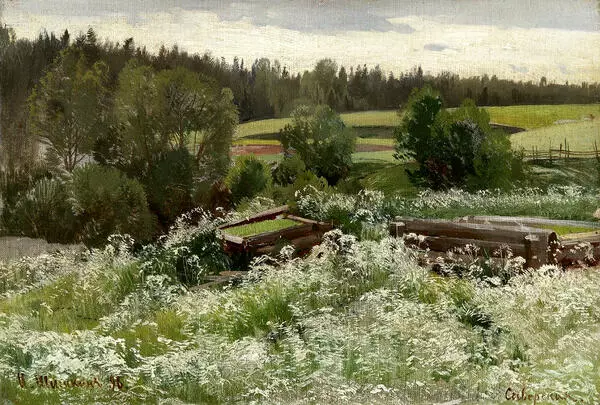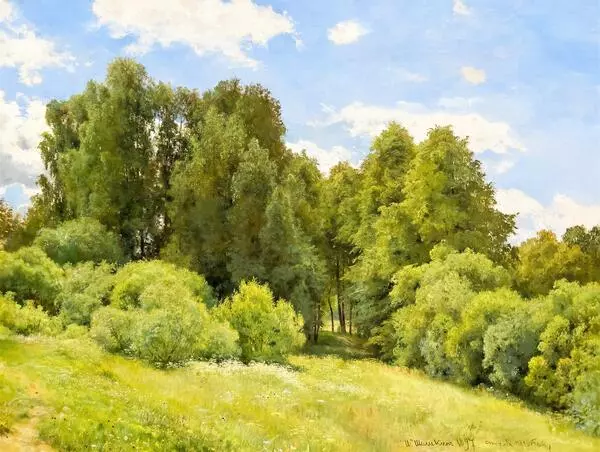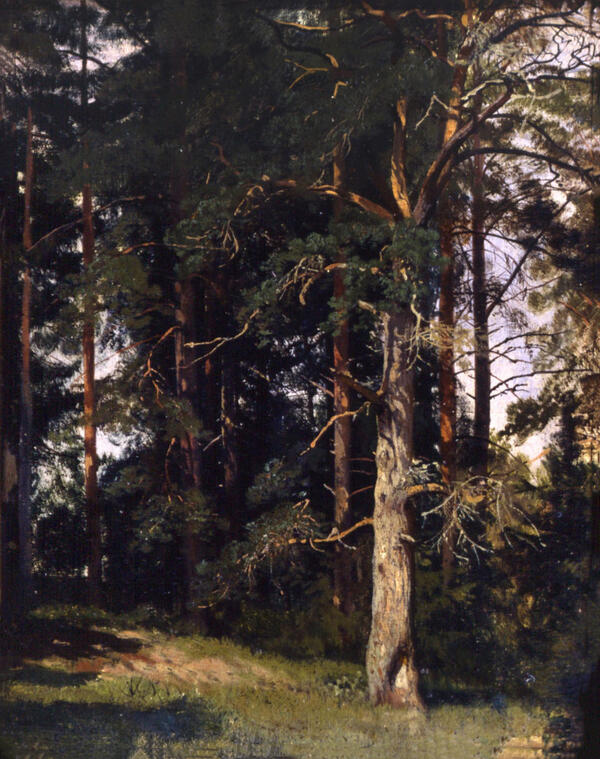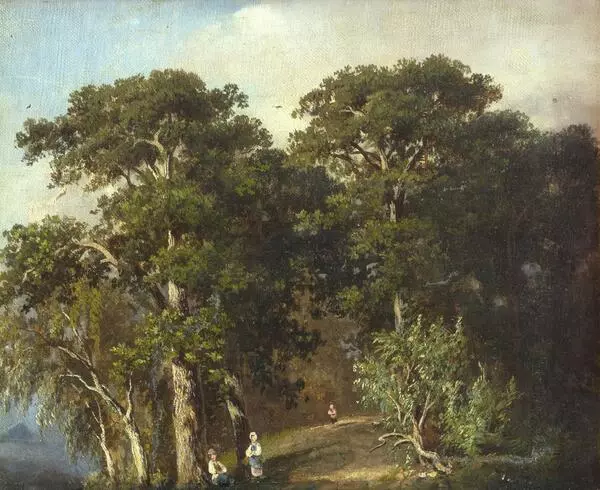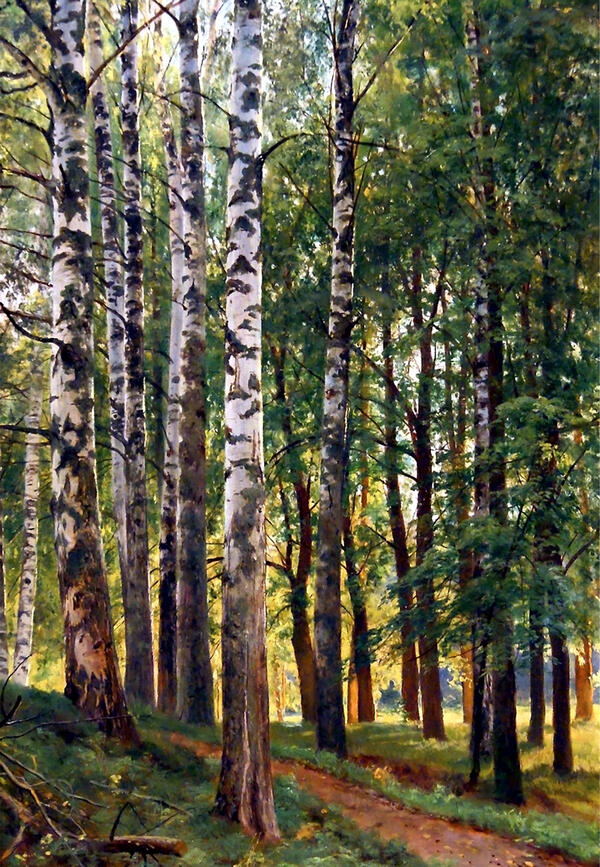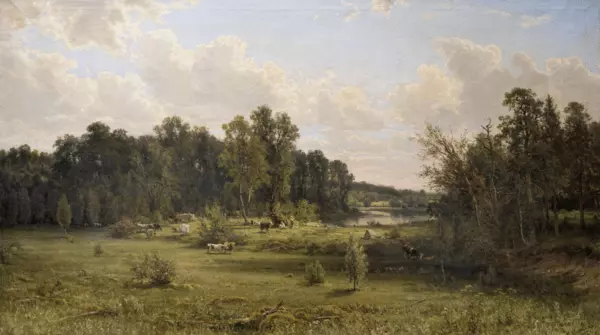The landscape ‘Autumn Forest’ was created by Ivan Shishkin in 1876. The artist skillfully transmitted light and air: foggy air, light that comes through branches of trees as well as all the shades of fallen leaves.
Shishkin rarely used transparent paints. The bark of trees and loose, moist foliage were painted thickly and solidly. In this work, you can see the artist’s manner to paint the foreground with thick brush body strokes. The distant view is made with thinner oil strokes.
Shishkin completed this small-sized picture as an independent work, although, it could have been just a sketch for another author.
The artist painted from life a lot so that to improve his drawing skill. He was very scrupulous at authenticity of the painting; he studied plant structures for a long time, so it is almost impossible to find any botanical inaccuracies. Sometimes critics even blamed him for that. They said Shishkin’s skill as a colorist is poorer than his talent as a drawing artist.
Ivan Shishkin was one of the founders of the Society of Travelling Art Exhibitions. His name is associated with the history of the Russian realistic landscape of the second half of the 19th century.
At the age of 12, he was sent to the Kazan Gymnasium where he studied until the fifth year. In 1852, he entered the Moscow School of Painting and Sculpture. In April 1855, his student sketch ‘Pine on the Rock’ was acquired by the Russian Museum.
Having finished the course, he went on with his education in the Imperial Academy of Arts. He used to make sketches from life in vicinity of St. Petersburg and on the island of Valaam. In the first year of his study at the Academy, Shishkin was awarded two silver medals for the painting ‘View in the Vicinity of St. Petersburg’ and for drawings made in summer in Dubki. In 1858, he was awarded a major silver medal for the sketch ‘Pine on Valaam’, in 1859 — a minor gold medal for the landscape ‘View on the Island of Valaam’ and in 1860 — a major gold medal for two paintings of the same name ‘View of Valaam Island. Kukko’. Together with the latest award, he got the right to go abroad as a pensioner of the Academy. He went to Munich and then to Zurich. In 1866, the artist returned to St. Petersburg before the expiration of his right.
Shishkin travelled around Russia a lot, and almost every year he exhibited his works at the Academy. In 1868, the Academy assigned Shishkin the title of professor, but Grand Duchess Maria Nikolaevna, the president of the Academy of Arts, instead awarded him the Order of Saint Stanislaus of the Third Class. At the World exhibition of 1867, Shishkin presented his several drawings and the painting ‘View in the Vicinity of Dusseldorf’. After the establishment of the Society of Travelling Art Exhibitions, Shishkin presented his paintings and pen pictures at its exhibitions. In 1892, he was invited to run the landscape studio of the Academy of Arts. The painter suddenly died in St. Petersburg on March 8, 1898, when he was sitting at an easel in front of a new painting.
Shishkin rarely used transparent paints. The bark of trees and loose, moist foliage were painted thickly and solidly. In this work, you can see the artist’s manner to paint the foreground with thick brush body strokes. The distant view is made with thinner oil strokes.
Shishkin completed this small-sized picture as an independent work, although, it could have been just a sketch for another author.
The artist painted from life a lot so that to improve his drawing skill. He was very scrupulous at authenticity of the painting; he studied plant structures for a long time, so it is almost impossible to find any botanical inaccuracies. Sometimes critics even blamed him for that. They said Shishkin’s skill as a colorist is poorer than his talent as a drawing artist.
Ivan Shishkin was one of the founders of the Society of Travelling Art Exhibitions. His name is associated with the history of the Russian realistic landscape of the second half of the 19th century.
At the age of 12, he was sent to the Kazan Gymnasium where he studied until the fifth year. In 1852, he entered the Moscow School of Painting and Sculpture. In April 1855, his student sketch ‘Pine on the Rock’ was acquired by the Russian Museum.
Having finished the course, he went on with his education in the Imperial Academy of Arts. He used to make sketches from life in vicinity of St. Petersburg and on the island of Valaam. In the first year of his study at the Academy, Shishkin was awarded two silver medals for the painting ‘View in the Vicinity of St. Petersburg’ and for drawings made in summer in Dubki. In 1858, he was awarded a major silver medal for the sketch ‘Pine on Valaam’, in 1859 — a minor gold medal for the landscape ‘View on the Island of Valaam’ and in 1860 — a major gold medal for two paintings of the same name ‘View of Valaam Island. Kukko’. Together with the latest award, he got the right to go abroad as a pensioner of the Academy. He went to Munich and then to Zurich. In 1866, the artist returned to St. Petersburg before the expiration of his right.
Shishkin travelled around Russia a lot, and almost every year he exhibited his works at the Academy. In 1868, the Academy assigned Shishkin the title of professor, but Grand Duchess Maria Nikolaevna, the president of the Academy of Arts, instead awarded him the Order of Saint Stanislaus of the Third Class. At the World exhibition of 1867, Shishkin presented his several drawings and the painting ‘View in the Vicinity of Dusseldorf’. After the establishment of the Society of Travelling Art Exhibitions, Shishkin presented his paintings and pen pictures at its exhibitions. In 1892, he was invited to run the landscape studio of the Academy of Arts. The painter suddenly died in St. Petersburg on March 8, 1898, when he was sitting at an easel in front of a new painting.
